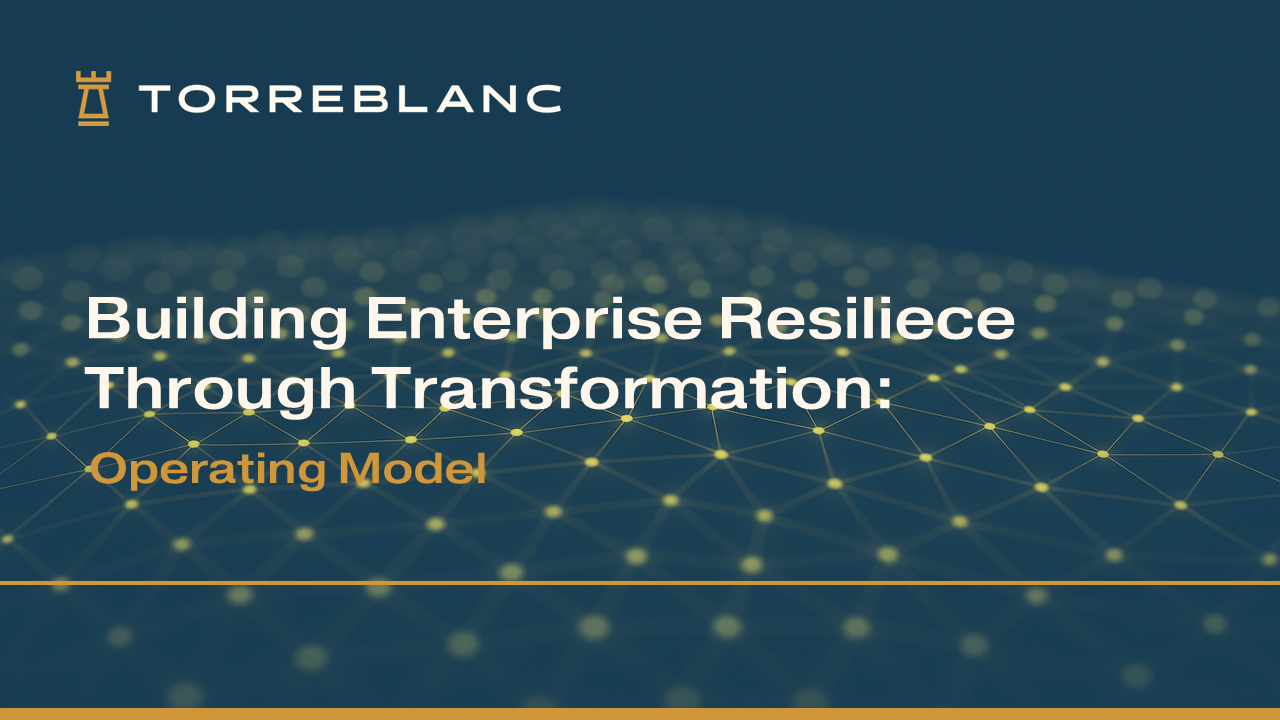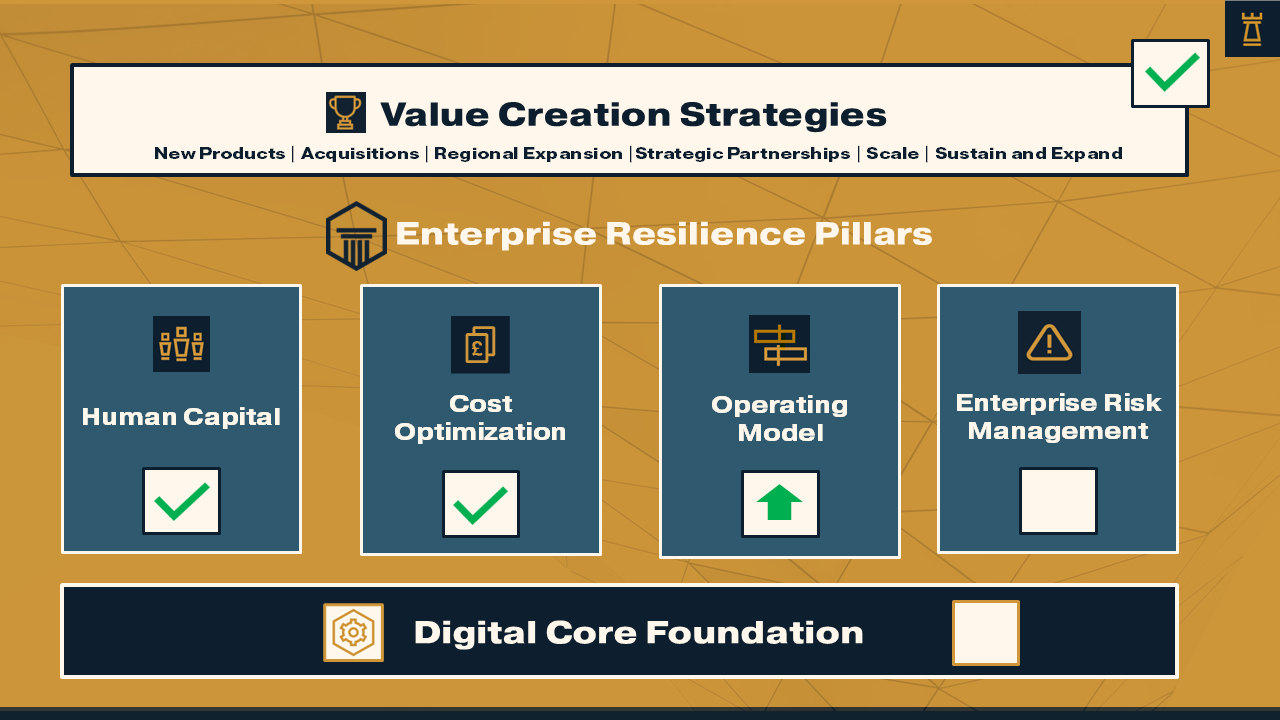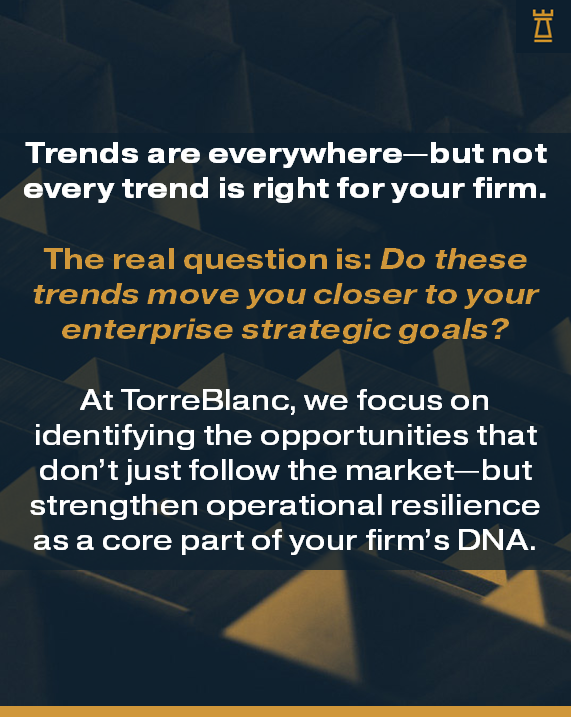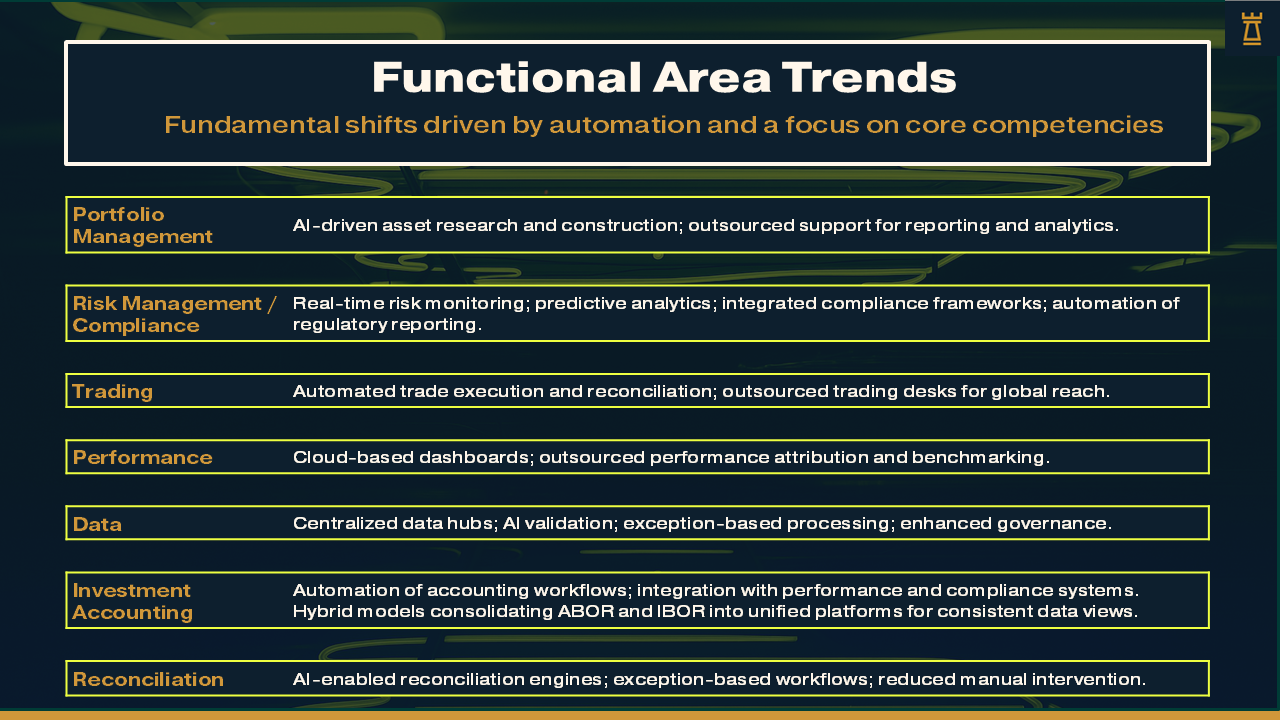Read More


Thank you for joining us for the fourth installment of our series, Building Enterprise Resilience Through Transformation, as we examine the current trends for operating models—and how they can enable enterprise agility to adapt to ongoing changes in the marketplace.

The operating model landscape for the whole-office is undergoing a profound reinvention. Firms are no longer simply optimizing for efficiency—they are rearchitecting their operating models to be more agile, intelligent, and resilient. This shift is driven by a convergence of forces: accelerating technological innovation, rising regulatory complexity, evolving investor expectations, and the need for scalable, cost-effective infrastructure.

At the core is a decisive shift toward digitally native, data-driven, and client-centric operating models. Cloud-based infrastructure has accelerated the replacement of legacy systems, enabling faster innovation and seamless remote collaboration on a wider scale. Automation and AI are showing potential for the entire trade-lifecycle value chain, from trade processing to compliance monitoring. Data is no longer a byproduct—it’s the foundation for real-time decision-making, personalized service, and regulatory transparency.
Just because there is a trend, does not mean its advantageous to your firm. How do these trends align with your firms goals? Identifying the opportunities that align with your enterprise value creation strategy will make operational resilience part of your DNA. The key to remember is that embracing continuous change is new baseline.

Firms are moving away from legacy, on-premise systems toward cloud-native, modular platforms. This shift enables faster deployment of new capabilities, seamless remote work, and greater resilience. For example, firms that had already adopted digital workflows were able to maintain continuity during the pandemic with minimal disruption—demonstrating the strategic value of digital readiness.
Automation is no longer limited to back-office tasks. AI and machine learning are being used to streamline trade processing, automate reconciliation, and monitor risk in real time. One firm implemented AI-driven exception handling in its post-trade operations, reducing manual intervention by over 60% and accelerating issue resolution.
Data is becoming the connective tissue of the modern operating model. Firms are investing in centralized data hubs, real-time analytics, and AI-powered validation to replace fragmented, manual workflows. This enables faster decision-making, better compliance, and more personalized client service. For instance, exception-based processing allows teams to focus on anomalies rather than routine data checks.
Regulatory changes—such as T+1 settlement cycles and enhanced transparency requirements—are prompting firms to modernize their compliance infrastructure. Rather than treating compliance as a cost center, leading firms are using it as a driver for operational upgrades, improved data governance, and enhanced client trust.
Outsourcing is evolving from a cost-saving measure to a strategic lever. Firms are increasingly outsourcing middle-office and even front-office functions—such as client reporting, data warehousing, and trading support—to specialized providers. This allows internal teams to focus on high-value activities while gaining access to scalable, expert-led services.
Let's evaluate how the whole-office operating models are changing. The front-office is embracing AI to support research and workflow automation. Distribution and sales are looking at predictive analytics. For the middle-office, there is an emerging paradigm: one where operations are not just a support function but a strategic enabler of growth, differentiation, and client experience. Let's have a look at the high-level themes by function below.
Trend: Portfolio teams are increasingly leveraging AI and machine learning to support asset research, scenario modeling, and portfolio construction.
Example: Automated tools are being used to simulate investment strategies across multiple asset classes, enabling faster iteration and more personalized client solutions.
Impact: This reduces reliance on manual modeling and enhances responsiveness to market shifts.
Trend: Real-time risk monitoring and predictive analytics are becoming standard.
Example: Firms are integrating AI-driven risk engines that flag anomalies and simulate stress scenarios across portfolios.
Impact: This allows risk teams to move from reactive oversight to proactive risk mitigation, especially in volatile markets.
Trend: Trade execution and reconciliation are increasingly automated, with some firms outsourcing trading desks to specialized providers.
Example: Algorithmic trading platforms are being paired with robotic process automation (RPA) to streamline post-trade workflows.
Impact: This reduces latency, improves accuracy, and frees up internal resources for strategic oversight.
Trend: Performance reporting is shifting from static, periodic reports to dynamic, real-time dashboards.
Example: Cloud-based analytics platforms allow performance teams to drill into attribution data and benchmark comparisons on demand.
Impact: This enhances transparency and enables faster client reporting cycles.
Trend: Data is being centralized into auditable, scalable platforms that support real-time analytics and regulatory reporting.
Example: Firms are replacing siloed spreadsheets with integrated data lakes and deploying AI for data validation and exception handling.
Impact: This improves data quality, reduces operational risk, and supports enterprise-wide decision-making.
Trend: Compliance functions are adopting real-time surveillance and automated rule validation.
Example: Regulatory reporting is increasingly handled by AI-enabled platforms that monitor transactions and flag potential breaches.
Impact: This reduces manual workload and ensures faster, more accurate regulatory responses.
Trend: The historical separation between ABOR (Accounting Book of Record) and IBOR (Investment Book of Record) is narrowing.
Impact: A unified data model supports consistent reporting, reduces reconciliation effort, and enables front-to-back alignment.
Example: Some firms are implementing hybrid platforms that consolidate ABOR and IBOR, allowing accounting and investment teams to work from a single source of truth.
Trend: Reconciliation is shifting from batch-based, end-of-day processes to real-time, exception-based workflows.
Impact: This allows operations teams to identify and resolve breaks as they occur, improving data integrity and reducing downstream risk.
Example: Firms are deploying AI to match transactions across custodians, fund administrators, and internal systems, flagging only true exceptions for human review.
Trend: Firms are automating journal entries, accruals, and corporate action processing using rule-based engines and robotic process automation (RPA).
Impact: This reduces dependency on manual intervention, minimizes errors, and accelerates month-end and quarter-end close cycles.
Example: A firm replaced manual NAV calculations with an automated accounting engine that integrates directly with its IBOR, reducing close time by 40%.

To build a future-ready operating model, resilience must be designed in—not added on. That starts with rethinking how workflows, systems, and vendor relationships function today. By identifying friction points, redundancies, and manual processes, leaders can unlock opportunities to streamline and automate. But transformation isn’t just about applying new tech to old ways of working. This is a common pitfall. At times, it means letting go of legacy processes altogether—and embracing the change that comes with adopting a new model built for what’s next.
Prioritize Automation and AI: Target high-volume, low-value tasks for automation. Invest in AI and machine learning to enhance decision-making, risk detection, and client personalization.
Shift to Core Competencies: Where appropriate, build strategic relationships to outsource non-core functions to trusted providers with domain expertise. Focus internal resources on differentiating capabilities and client experience.
Treat Modernization as a Journey: Avoid one-off transformation projects. Instead, embed modernization into the firm’s long-term strategy, with clear milestones, feedback loops, and governance.
As the industry faces mounting pressure to do more with less, firms must rethink how they operate, how they scale, and how they deliver value. The convergence of automation, data intelligence, regulatory complexity, and client expectations is reshaping the very foundation of operational strategy.
What emerges is a clear imperative: firms must build operating models that are agile, modular, and resilient by design. This means embracing technology not just as a tool, but as a strategic partner. It means viewing outsourcing not as a cost-cutting measure, but as a way to unlock scale and specialization. And it means cultivating a workforce that is empowered, adaptable, and ready to lead through change.
The firms that succeed will be those that act decisively—those that modernize with intention, invest in their people, and embed resilience into their culture. In doing so, they won’t just keep pace with the future—they’ll help define it.
Join us for our next post on Building Enterprise Resilience Through Transformation as we evaluate Enterprise Risk Management.
The TorreBlanc Advisory Team
Series: Building Enterprise Resilience Through Transformation
Part 1: Introduction - A Holistic and Forward-Looking Perspective
Part 2: Human Capital
Part 3: Cost Optimization
Part 4: Target Operating Model
Part 4a: Wealth Operating Model - Trends in Building Resilience
Part 5: Enterprise Risk Management
Part 6: Digital Core Foundation (Forthcoming)